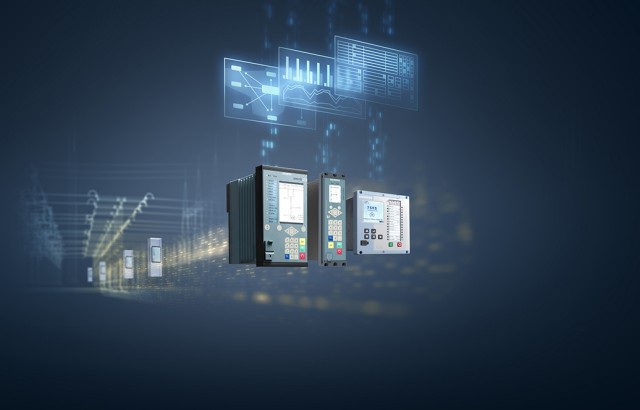The Neural Network of Power System Protection
Protection relays serve as the intelligent decision-makers in medium voltage electrical systems, continuously monitoring circuit conditions through current and voltage transformers and commanding circuit breakers to isolate faulty components when problems arise. These devices protect critical equipment, including transformers, distribution cables, busbars, generators, and motors—forming the neural network that keeps power systems safe and operational.
The selection of protection relay technology represents a fundamental trade-off between cost and supply security. While simple fuses may suffice for smaller installations, transformers rated 630 kVA and above typically require the sophistication of circuit breakers with either time limit fuses (TLFs) or protection relays. Protection relays offer compelling advantages: they eliminate the slow response of MV fuses to low overload currents, enable sensitive earth-fault detection, and provide greater network flexibility for complex operational requirements.
The Protection System Architecture
Essential Components and Signal Flow
Every protected item in a power system follows a standardized architecture built around three core elements:
Input Systems: Protection-class current and voltage transformers provide the relay with scaled representations of system conditions, while remote-end protection signals enable coordination between distributed protection devices.
Protection Logic: The relay processes these inputs to distinguish between normal operation, external faults, and internal faults requiring immediate action.
Output Actions: Upon detecting fault conditions, the relay sends trip commands to circuit breakers, providing either main protection for equipment under its direct responsibility or backup protection when upstream devices fail to clear faults.
This architecture creates an insulating barrier between dangerous medium voltage levels and the protection equipment, allowing relays to operate safely at nominal 1000V insulation levels while monitoring systems that may operate at many thousands of volts.
Protection Hierarchy: Main and Backup Systems
Effective protection employs multiple layers of defense. Main protection operates immediately when faults occur within its designated zone, while backup protection activates after a brief delay if main protection fails. This redundancy ensures that faults cannot persist indefinitely, even when primary protection devices malfunction.
ANSI Device Numbering: The Universal Language
The American National Standards Institute (ANSI) and IEEE established a universal numbering system (C37.2-2008) that enables protection engineers worldwide to communicate unambiguously about relay functions. This alphanumeric coding system, similar to IEC 61850 numeric codes, provides standardized identification for protection devices regardless of manufacturer or geographic location.
Common ANSI codes include 50 (instantaneous overcurrent), 51 (inverse time overcurrent), 50N/51N (earth fault protection), and 87 (differential protection). This standardization proves invaluable when designing, commissioning, and maintaining protection systems, particularly in international projects or when integrating equipment from multiple suppliers.
Evolution of Protection Relay Technology
Electromechanical Relays: The Foundation Era
Historical protection systems relied on simple “attracted armature” relays using 5-ampere coils as the standard. These devices employed iron-cored electromagnets that attracted movable armatures, making or breaking electrical contacts to control circuit breakers. While revolutionary for their time, these relays could only discriminate based on current magnitude, limiting their application to situations with significant fault current variations.
The instantaneous nature of armature relays made them suitable for protecting distribution transformers where the transformer’s reactance created substantial differences between supply-side and load-side fault currents. However, modern distribution systems require more sophisticated discrimination methods due to network switching that alters expected fault current levels unpredictably.
Time Limit Fuses: Early Intelligent Response
Time Limit Fuses (TLFs) represented an early solution to the limitations of simple time-delayed protection. These devices connected a fuse element in parallel with circuit breaker tripping coils, creating protection with inverse time/current characteristics. When fault currents increased, the TLF would melt proportionally faster, allowing current to flow into the breaker tripping coil.
TLFs offered several advantages: they could perform instantaneous operations on relatively low earth-fault currents (less than 40A), required no auxiliary tripping battery, and provided inherently graded protection where faults closer to the source cleared faster than those farther downstream.
Induction Disc Relays: Mechanical Intelligence
Electromechanical induction relays, dominant until the 1970s, operated on the same principles as induction motors. An aluminum disc subjected to two magnetic forces created rotational torque proportional to fault current. Spring restraint determined the minimum operating current, typically 110% of full-load current.
These relays featured Inverse Definite Minimum Time (IDMT) characteristics with two key adjustments:
Plug Settings: Determined the current level at which the relay would begin to operate, typically ranging from 50% to 200% in 25% increments.
Time Multiplier Settings (TMS): Controlled the speed of relay operation, allowing adjustment between 10% and 100% of full disc rotation time in 5% increments.
The inverse characteristic meant higher currents produced faster operation times—a critical feature for minimizing equipment damage during severe faults.
Static Relays: Electronic Enhancement
Introduced in the early 1960s, static relays replaced mechanical moving parts with electronic circuits while retaining armature-attracted output contacts. These devices provided greater reliability, faster operation, and finer current settings (typically 50% to 200% in 5% steps) compared to electromechanical predecessors.
Static relays also imposed lower burdens on current transformers, enabling the use of smaller, less expensive CTs. However, their single-function, hardwired design meant they couldn’t be reprogrammed for different applications, and their electronic complexity made field calibration and repair impossible without specialized equipment.
Digital and Numerical Relays: The Modern Era
The introduction of digital relays in the early 1980s marked a revolutionary transformation in protection technology. Microprocessors and digital signal processors replaced analog circuits, enabling sophisticated mathematical algorithms to implement protection functions with unprecedented accuracy and flexibility.
Modern numerical relays offer remarkable capabilities:
Multiple Protection Functions: A single relay can provide overcurrent, earth fault, directional, and differential protection functions simultaneously.
Precise Settings: Current multipliers are adjustable from 0.2 to 2.5 in 0.05 steps, with time multiplier settings from 0.01 to 1.5 in 0.005 increments.
Communication Capabilities: Support for protocols including Profibus, Modbus, and IEC 61850 enables integration with building management systems and utility networks.
Additional Features: Built-in metering, disturbance recording, fault recording, and programmable logic operations provide comprehensive system monitoring and analysis.
Communication Protocols: Enabling System Integration
Physical-Based Protocols
Early communication systems relied on physical connection standards to ensure compatibility between manufacturers:
RS-232: The most basic communication protocol, supporting simplex, half-duplex, or full-duplex operation over single twisted-pair cables.
RS-485: More advanced communication allowing up to 32 devices on half-duplex networks, controlled through polling from master units to slave devices.
Layer-Based Protocols: The OSI Model
The Open Systems Interconnection (OSI) model created a seven-layer framework for standardized communication between diverse devices:
- Physical Layer: Manages electrical, mechanical, and procedural network properties
- Data Link Layer: Provides unique device identification and error handling
- Network Layer: Controls routing and addressing between devices
- Transport Layer: Manages data transfer between devices
- Session Layer: Establishes logical connections between devices
- Presentation Layer: Handles format conversion to common representations
- Application Layer: Enables direct user interaction through software applications
Modern Protocol Standards
DNP 3.0: Developed specifically for substation interoperability, this protocol uses OSI layers 1, 2, and 7 for basic implementation, with an optional pseudo-transport layer for message segmentation.
Modbus: A three-layer protocol using master-slave communication where only the master can initiate transactions. Available in ASCII, RTU, and TCP/IP frame formats.
IEC 61850: The international standard for Ethernet-based substation communications, supporting both analog and digital data exchange over electrical connections and optical fiber. This protocol offers programming independence, higher performance, and simultaneous multiple data stream transmission.
Directional Protection: Intelligent Current Flow Sensing
In closed-ring circuits where current can flow in either direction, directional relays become essential for proper coordination. These sophisticated devices determine fault current direction by analyzing the phase relationship between voltage and current.
Modern digital directional relays compare current and voltage phase angles: if current lags voltage, the relay permits tripping; if current leads voltage (indicating reverse fault current flow), the relay blocks tripping operation. This intelligence enables complex ring-main protection schemes that would be impossible with simple overcurrent relays.
Directional relays are conventionally represented with arrows indicating their sensing direction, with current flow against the arrow direction being “blocked” or disregarded.
Unit (Differential) Protection: The Gold Standard
Principles and Advantages
Unit or differential protection represents the most reliable and fastest protection method available, operating on the fundamental principle of current balance. By measuring current entering a protected zone and comparing it with current leaving the zone, these systems can detect internal faults with extraordinary sensitivity and speed.
The advantages are compelling:
High Speed: Typical operation within 10-50 milliseconds (0.5-2.5 cycles at 50Hz) High Sensitivity: Can detect very small fault currents that might not trigger overcurrent protection Absolute Selectivity: Only operates for faults within the protected zone Equipment Stress Limitation: Rapid clearing minimizes thermal and mechanical stresses
Implementation Challenges
While conceptually simple, differential protection faces practical challenges. Perfect CT matching is impossible, and protection relays are rarely located at exact electrical midpoints. These factors require careful balancing and stabilizing resistor calculations to prevent false operations.
Balanced Current vs. Balanced Voltage Schemes
Balanced Circulating Current Schemes: Connect CTs in series with secondary currents circulating between them. Protection relays connect across the midpoint, seeing zero current during normal operation and through-faults, but full differential current during internal faults.
Balanced Circulating Voltage Schemes: Connect CT secondaries in opposition, eliminating circulating current during normal operation. This approach proves preferable for longer distances where lead resistance would create excessive burdens on current-based schemes.
Modern Numerical Differential Protection
Contemporary numerical relays typically use fiber optic or digital communication media for differential schemes, enabling phase-by-phase current comparison rather than summation methods. These systems incorporate biased differential principles to compensate for CT mismatches and include sophisticated security features to prevent false operations.
Applications Across Equipment Types
Transformer Protection
Distribution transformers represent critical system components requiring reliable protection against internal faults, overloads, and through-faults. The choice between fuses, TLFs, and relay protection depends on transformer size, criticality, and system complexity.
Feeder Protection
Distribution feeders face diverse fault types and varying system configurations. Modern numerical feeder protection combines overcurrent, earth fault, and directional elements with communication capabilities for comprehensive coverage.
Generator and Motor Protection
Rotating machines require specialized protection addressing their unique failure modes: overheating, loss of synchronism, mechanical faults, and electrical faults. Numerical relays provide integrated protection for these complex machines.
Integration with Modern Power Systems
Building Management System Integration
Modern protection relays communicate operating status, alarms, and measurements to building management systems through standardized protocols. This integration enables comprehensive facility monitoring and automated responses to electrical system events.
Utility Communication
Advanced communication capabilities allow private MV networks to interface with Distribution Network Operators (DNOs), providing system status information and enabling coordinated protection schemes across utility boundaries.
Smart Grid Readiness
As power systems evolve toward smart grid architectures, protection relays serve as intelligent nodes capable of participating in automated system reconfiguration, load management, and renewable energy integration.
Future Trends and Considerations
Cybersecurity Challenges
Increased connectivity brings cybersecurity concerns requiring robust authentication, encryption, and access control measures to prevent malicious interference with protection systems.
Artificial Intelligence Integration
Machine learning algorithms are beginning to enhance protection system performance through predictive maintenance, adaptive settings, and improved fault classification.
Renewable Energy Integration
Variable renewable energy sources create new protection challenges requiring adaptive schemes capable of handling bidirectional power flows and rapidly changing system conditions.
Conclusion
Protection relays have evolved from simple electromechanical devices to sophisticated digital systems capable of complex decision-making and communication. This evolution reflects the increasing complexity and criticality of modern electrical power systems.
Understanding protection relay principles, from basic overcurrent detection to advanced differential schemes, remains essential for power system engineers. As systems become more complex and interconnected, the role of intelligent protection continues to expand, requiring engineers to balance traditional protection principles with emerging technologies and communication capabilities.
The future of protection relay technology lies in enhanced intelligence, improved communication, and seamless integration with evolving power system architectures. Success in this environment requires both solid grounding in fundamental protection principles and adaptability to embrace new technologies and methodologies.

